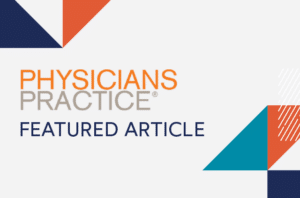The COVID-19 pandemic created numerous challenges for providers, prompting many to re-evaluate their approaches to critical processes, such as engaging with patients, minimizing the cost of collections, and offering seamless billing options.
Although some of the new burdens are likely to lessen as time goes on, the healthcare industry is unlikely to ever return completely to pre-pandemic financial and operational models. Providers have reacted accordingly, making adjustments to workflows and business processes, but it’s often unclear which of these adjustments will be permanent and which will be temporary.
Understanding the difference is among the looming challenges providers face as they prepare for a post-pandemic world.
Consumer Preference to Guide Industry’s Reemergence
Many of the changes that the healthcare system has undergone as a result of COVID-19 were initially driven by necessity and fear, such as requiring patients to check-in via mobile devices or a call from the parking lot as opposed to the traditional in-office check-in with a receptionist.
Now, some providers are learning that many patients have been happy with these changes and would like to see them made permanent. Indeed, consumer preferences and behavior are likely to “guide the reemergence” of the industry, according to Deloitte.
As it relates to payments, providers can cater to consumer preference by offering patients a comprehensive experience that creates a payment process that is simple, secure, and convenient. Importantly, providers must meet patients where they are by offering a process regardless of payment channel.
Are You Prepared for New Consumer Demands? A Three-Question Assessment
As providers prepare for new consumer demands in the COVID-19 era, they should ask themselves three key questions to determine what future workflows and business processes should look like:
1. Are the COVID-19 precautions you put in place temporary, or will they meet the new demand of consumers?
At the onset of the pandemic, many provider organizations had little choice but to adjust operations virtually overnight as elective procedures were canceled, support staff began working remotely, preventative appointments were canceled, and telemedicine replaced office visits.
As telehealth visits became the norm, consumers became more familiar and comfortable with the touchless, mobile, pre-visit check-in process. Touchless, mobile check-in eliminates the need for pen, paper, and clipboards, and reduces the time that patients spend in waiting rooms. Mobile check-in allows patients to skip the line, with the ability to verify demographics, update insurance information, make payments, put a card-on-file, and complete all forms before an appointment.
Given the convenience, demand is likely to remain strong.
2. Did you make the right changes?
During times when some geographic areas entered lockdown, telehealth became the best option for many patients to remain connected to their doctors without exposing them to risks at doctors’ offices. To what extent demand will remain high for telehealth as vaccination becomes more widespread is unclear, but many patients will certainly at least expect to be presented the option of a virtual visit.
To prepare for this new reality, providers should ensure that telehealth platforms integrate with other solutions that support touchless, mobile check-in and payment; pre-appointment insurance verification, price estimates and reminders; digital receipts; and automated billing.
3. Are you prepared for the long-term?
While some regulations have been adjusted to accommodate patient needs during a time of uncertainty and remain subject to change, it is important for providers to develop a long-term plan that matches the reality of what consumers expect today. That means prioritizing flexibility, convenience, security, mobility, and ease-of-use while also meeting stricter guidelines around patient privacy and data security.
Providers need technology that features broad payment acceptance functionality, elite-level security, and expert support throughout the payments lifecycle, in addition to payment solutions that integrate seamlessly with electronic health records systems to facilitate payments from all channels, while making reconciliation easy.
To read Sphere’s eBook “Optimizing Patient Payments During COVID-19 and Beyond,” click here.





